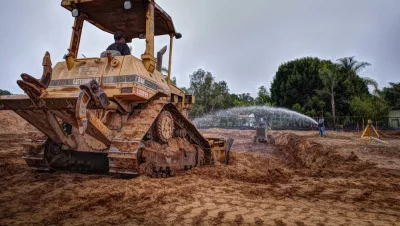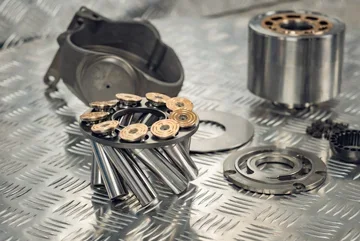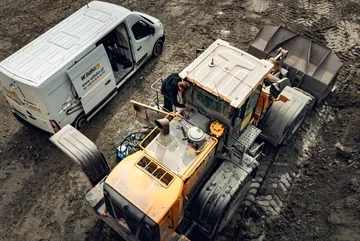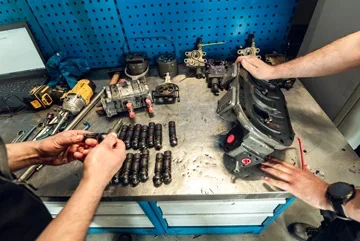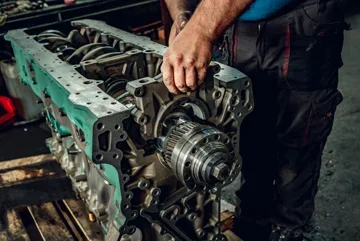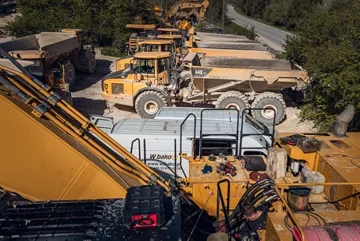This time we didn't work in the workshop, but in the open field. Literally.
Our patient was a Liebherr R944 excavator that required comprehensive service. The main pump refused to cooperate, and since the client was pressed for time, we took immediate action. Within two days, we completed the installation of the pump set, cleaned the tank, filtered the oil, and bled the hydraulic system.
Day one – pump installation and system cleaning
We started with the pump reducer – the first element that went into place. At the same time, we prepared the main pump and then the swing pump. Both units had been previously refurbished and tested in our workshop. The key detail? O-rings. If installed incorrectly, they can cause a lot of problems with leaks. The swing pump, although not damaged, came to us for inspection. It just needed to be cleaned and tested. The client decided not to take any risks and delivered it to us along with the main pump. A professional approach.
Filtration and tank cleaning – field conditions, working at maximum
No power? No problem. We started the generators and began filtering the oil. It turned out that the oil, despite its milky color (water!), was new – our laboratory confirmed this. Fortunately, the water content was not high enough to require oil disposal. We proceeded with thorough tank cleaning – first roughly, then rinsing. We found something that surprised us – basket elements of the swing pump bearings. It turned out that the previous service did not bother to clean the tank after the failure. We do not leave such things to chance. We also installed the swing brake and then the swing motor – again paying attention to every O-ring to avoid later leaks.
Day two – frost, filtration, and startup
On the second day, it was time for bleeding and starting the machine. But before that – filter installation. In a system that was so clogged, the filter set would need to be replaced after just a week of operation. The frosty morning (-10°C) didn't help, but we left the machines idling to warm up properly. We filled the main pump and the swing pump with oil – at the highest points, to avoid dry starts. At this temperature, the oil was as thick as honey, but a large syringe solved the issue. We also used our winter gadget – glove warmers. After starting the machine, we proceeded with the tests. Connecting the gauges, checking the pressure – everything was textbook. The parameters were perfect. The machine was ready for work and could be safely handed over to the client.
Service in extreme conditions – summary and behind the scenes of the operation
The two-day operation was a success. The pumps were refurbished, the system was cleaned, and the pressures were exemplary. But it's not just a matter of mechanics – it's a demonstration of teamwork, experience, and responsibility for the client's equipment, which fights against time and difficult conditions every day. Such field operations require not only technical knowledge but also adaptive skills – especially when we operate without power, in negative temperatures, and far from workshop facilities. These on-site services are often true survival schools, but also moments when the quality of our service is most visible. For us, every detail matters – from the condition of the O-rings to the thorough bleeding of the system. Because we know that only then can the machine operate reliably and safely.
The full video can be seen here.











